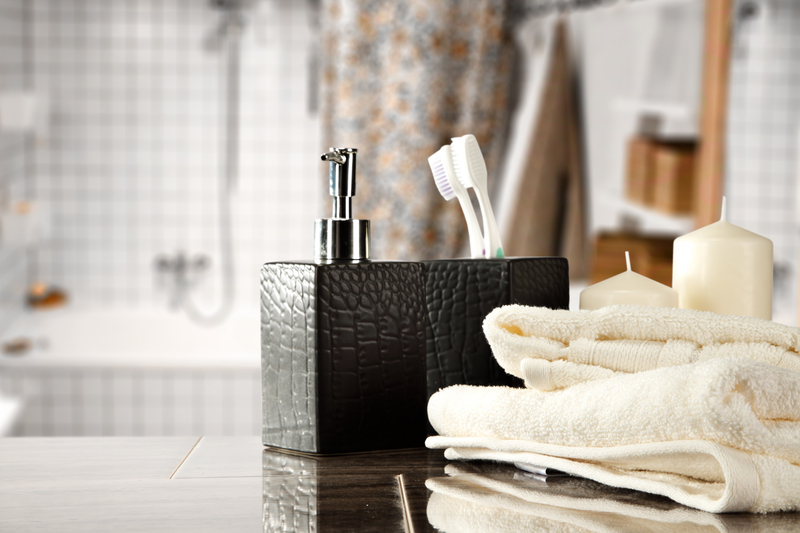Preserve Your Sofa's Quality: Long-Term Storage Insights
Posted on 17/05/2025
Preserve Your Sofa's Quality: Long-Term Storage Insights
Are you planning to store your beloved sofa for an extended period? Whether you're moving, downsizing, renovating, or simply making space, knowing how to preserve your sofa's quality in long-term storage is crucial. Sofas represent a significant investment and often hold sentimental value. This comprehensive guide offers expert tips to ensure your sofa remains fresh, clean, and in top condition--even after months or years in storage.
Why Proper Sofa Storage Matters
Sofas, like other upholstered furniture, are vulnerable to damage during extended storage. Issues such as mold, mildew, fabric deterioration, unpleasant odors, pest infestations, and physical damage can significantly reduce the lifespan and value of your sofa. Learning the best practices for long-term sofa storage unlocks substantial benefits:
- Extends the lifespan of your couch
- Prevents costly repairs or reupholstery
- Maintains appearance and comfort
- Keeps the sofa ready for use at any time
- Avoids unpleasant surprises when retrieving it from storage

How to Prepare a Sofa for Long-Term Storage
1. Clean Your Sofa Thoroughly
Cleaning is the first and most crucial step in preserving your sofa's quality. Dust, dirt, and crumbs can attract pests and cause fabric degradation over time. Here's how to prepare your couch for storage:
- Vacuum every surface: Use the upholstery attachment to pick up dust, pet hair, and debris from cushions, seams, and crevices.
- Treat stains: Use a fabric-appropriate cleaner.
- Wipe down hard surfaces: For leather or wood, use appropriate cleaning products to remove dirt and grime.
- If possible, remove and launder cushion covers that are machine washable.
2. Ensure Complete Dryness
Even minimal moisture can trigger mold and mildew growth. Make sure your sofa is entirely dry before covering or moving it to a storage unit.
- Air dry indoors: Let the cleaned sofa air dry for at least 24 hours in a well-ventilated room.
- Use fans or a dehumidifier: This accelerates the drying process and eliminates hidden moisture.
3. Disassemble Your Sofa (If Possible)
Many modern sofas allow for partial disassembly. This makes moving and storing your sofa for the long term much safer and simpler:
- Remove detachable legs, arms, and cushions to prevent stress on joints and reduce the risk of damage.
- Keep all hardware (screws, bolts) in a labeled bag taped to a secure part of the sofa frame.
4. Protect With Proper Covers
Avoid using plastic directly on upholstered furniture. Plastic traps moisture inside, which can promote mildew. Instead, use:
- Breathable furniture covers (cotton sheets, moving blankets, or purpose-made fabric covers) that shield against dust while allowing air circulation.
- Wrap wooden or metal legs with bubble wrap for extra protection.
Best Practices for Long-Term Sofa Storage
Select the Ideal Storage Location
- Climate-controlled storage units are the best choice. Maintaining stable temperatures and humidity levels is critical for preventing mold, mildew, and warping, especially for luxury, leather, or antique sofas.
- If you are using a garage or attic, choose a space away from direct sunlight, windows, or moisture-prone areas. Protect your sofa's quality by avoiding unregulated environments.
Elevate the Sofa Off the Floor
Keep your sofa elevated in storage to avert accidental water damage, dust accumulation, and pest intrusion. Place wooden pallets, moving dollies, or blocks beneath the sofa's legs.
Avoid Overcrowding
It's tempting to save space, but stacking items on your sofa risks structural damage and fabric deformation. Store your sofa upright or as it would sit in your home, and leave adequate space around for airflow and safe movement.
Keep Storage Unit Clean and Pest-Free
- Dust and mop the unit before placing any furniture inside.
- Add pest repellents or traps.
- Inspect regularly for signs of pests, leaks, or dampness.
Minimize Light Exposure
Light (especially sunlight) can fade the upholstery and damage leather. Choose a dim or sun-protected storage location. Extra layers of covering can provide further light protection.
Monitor and Maintain Humidity Levels
Humidity is the enemy of furniture preservation. Keep the humidity between 30-50% by:
- Installing a small dehumidifier (many climate-controlled facilities help regulate this automatically)
- Placing silica gel packets or moisture absorbers beneath the covers
Special Considerations: Upholstery Type and Sofa Style
Leather Sofas
- Condition leather surfaces with specialized conditioners pre-storage to prevent drying and cracking.
- Check periodically for mold or peeling, as leather is particularly sensitive to environmental changes.
Fabric Upholstery
- Ensure 100% dryness before covering or storing.
- Mothballs can help repel pests but should not touch the fabric directly.
- Go for breathable covers only.
Wooden or Antique Sofas
- Apply wood polish or wax for added moisture protection.
- Store in climate-controlled environments only.
- Handle with extra care to prevent scratching or denting ornate details.
Common Mistakes to Avoid When Storing Your Sofa Long-Term
- Wrapping with plastic: Traps moisture, leading to mold and mildew.
- Leaving cushions compressed: May cause misshapen cushions and permanent indentations.
- Forgoing climate-control: Exposes your couch to damaging temperature and humidity fluctuations.
- Skipping cleaning: Improper cleaning before storage can result in set-in stains and stubborn odors.
- Stacking heavy items on top: Can warp the frame and damage the upholstery.
How to Revitalize Your Sofa After Storage
When it's time to bring your sofa out of storage, follow these steps to ensure it's ready for use:
- Carefully uncover and inspect your sofa for any signs of pests, mildew, or physical damage.
- Vacuum again to remove dust that may have settled.
- Air out the sofa in a shaded, ventilated spot to eliminate any stale odors.
- Launder covers and pillows for freshness.
- If you notice surface mold or dampness, treat immediately with a suitable cleaner and allow thorough drying.
- Reassemble any disassembled parts using labeled hardware for a safe and sturdy setup.

Frequently Asked Questions on Preserving Sofa Quality in Storage
Can I store my sofa in a non-climate-controlled space?
While it's possible, it's not recommended for long-term sofa storage. Fluctuating temperatures and humidity can warp wood, damage upholstery, and cause mold. If you must use a regular storage space, double up on breathable coverings and check the sofa regularly.
Is it okay to use shrink-wrap?
Shrink-wrap is suitable for short-term moves but not for extended storage. It locks in moisture and prevents airflow--both of which are detrimental to your couch in storage.
How can I prevent pests from damaging my sofa?
Clean and vacuum thoroughly before storage. Use pest repellents or traps within your storage area, and choose a facility with good pest control practices.
Do I need to periodically check on my sofa during storage?
Yes! If possible, visit the storage unit every few months to inspect for mold, pests, or physical damage. Early detection prevents minor problems from becoming major repairs.
Final Thoughts: Protect Your Investment
Investing a little time and effort in preparing your sofa for long-term storage can make a significant difference in its future usability and appearance. From thorough cleaning and mindful packing to smart choice of storage location, each step ensures your couch remains in excellent condition. The key is to keep it dry, protected, well-ventilated, and undisturbed. By following these advanced sofa storage tips, you preserve both the quality and memories attached to your favorite seat in the house.
Ready to store your sofa without worry?
Apply these long-term sofa preservation tips for peace of mind and a great-looking sofa when you need it again.
- Clean and dry thoroughly
- Disassemble and cover with breathable materials
- Opt for climate-controlled, pest-free storage
- Avoid stacking and overcrowding
- Inspect periodically
Your sofa deserves the best protection--make sure it emerges from storage looking as beautiful as the day it went in!
```


